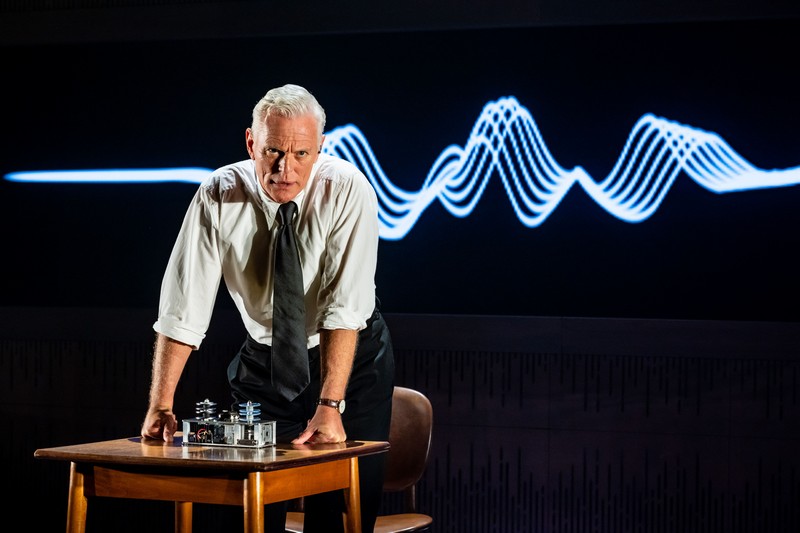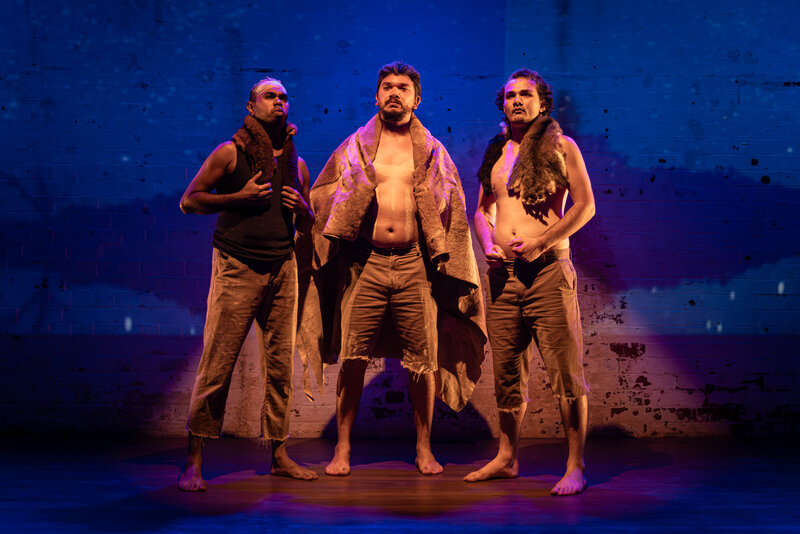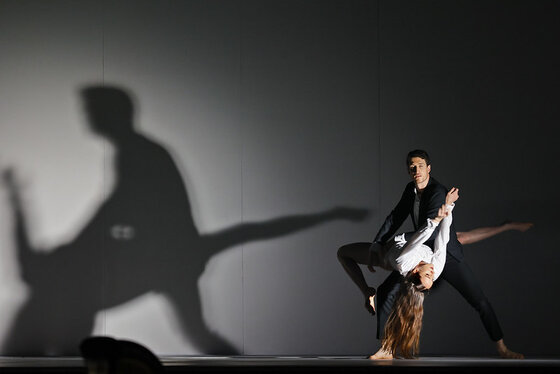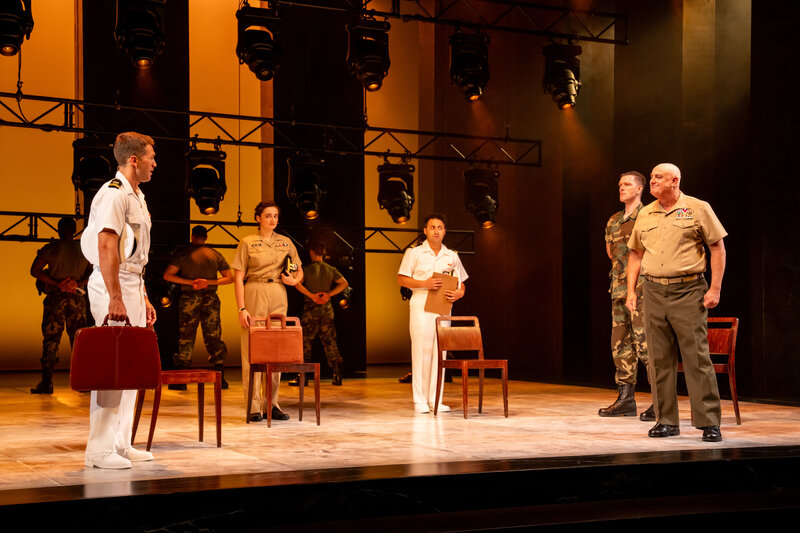Queensland writer and composer Paul Hodge’s Black Box touches down in world premiere at QPAC with unique proposition. It presents a bi-aural 3D-soundscaped musical telling of the life of a little-known Australian inventor. On paper it sounds like a niche, curious combination of elements. In reality it clearly works; in fact it not only works, but triumphs in a unique and absorbing night of brilliant out-of-the-uusal-box theatre.
The show, which serves up an experience as much as entertainment, sees audience members wearing individual cordless headphones to be aurally immersed in the story of Dr David Warren, the Australian inventor of the first black box flight recorder. The multiple levels upon which this works become apparent as things unfold from our initial introduction to a youthful wannabe radio ham David (Michael Cormick) who likes spending time outside, planes and music on a radio gifted by absent minister father. Still grieving the schoolboy loss of his always-busy dad in a plane crash, practical black-and-white thinker David heads to Sydney University to study science teaching on way to his ultimate goal of gaining a PhD in Chemistry to make planes safer through study of fuels and such.
As David moves into marriage with optimistic and artistic dreamer Ruth (Helen Dallimore), his adult passions are activated by overseas completion of a PhD in Physics and a research breakthrough that follows his UK airshow introduction to the world’s first jet airline, which can fly double the speed of anything else. When David is forced back to Australia and into a military public service role, his research is recalibrated thanks to a random trade show discovery, which leads to a relentless determination to have black boxes made mandatory in all planes thorough an international crusade to be heard.

It’s a fascinating story, especially from a Queensland perspective. The inquiry into 1960’s Trans Australia Airline passenger aircraft crash into the ocean on approach to Mackay played a major role in black boxes being placed in every plane. Alongside its history though, this is also the story of a man and wife and, through this, tribute also to the support offered by Ruth’s reminders to David that showing and telling works better than just the latter.
Dallimore gives a solid performance, journeying us through Ruth’s transformation from solely supportive wife to otherwise concerned mother attempting to hold down the fort while David works late and travels overseas, as is needed for his efforts to be recognised. However, as touching as some of their moments together as, in foreshadowed despair as much as delight as their family grows, this really is Cormick’s show. Never off stage for its approximately two-hour (with interval) duration, he takes his character from child to adult and ultimate Doctor, demonstrating honed acting skills in naturally relaying his character’s interactions and conversations with unseen others (amongst an actual much larger cast, which includes names such as Bernard Curry, Bryan Probets, Hugh Parker, Liz Buchan and Elliot Baker) heard only through our combined headphones… like sympathetic superior Lawie who supports his on-the-side passion project work for after his day-to-day fuel tanker blow ups et al. It’s all quite clever as we see Cormick also play, for example, on a swing concert date, an invisible clarinet in perfect synchronicity with the sounds of our (and his) headphones.

The headphones do more than just surround sound individual audience members with the atmospheric details of mosquitoes and alike. They serve as a multi-layered metaphor as they allow us, like David, to hear music all around (courtesy of the 15-piece band) in every sound and also what happens in the shades in between, on each side of his mind… in stereo rather than mono tell show of David’s inventive inspirations. And combined with the small Cremorne Theatre space and the work’s era-evocative and thematically appropriate yet unobtrusive staging (set design Isabel Hudson), including use of HD screens (video design by Mic Grucry), they create an individual intimacy to the storytelling, which only heightens its engagement.
Under Nick House’s musical direction (rehearsals musical direction by Simon Hold), Hodge’s orchestrations literally heartbeat through the musical in work with Daniel Herton’s sound design, through unique numbers such as an energetic doof doof signpost of initial European interest in David’s re-released report, which work alongside the original Dami In song ‘A New Era’. ‘Show and Tell’ refrains throughout, cleverly morphing into sneak-up of a catchy ‘Unofficially’, which sends the audience towards interval with snappy share of David’s intention to move from tell to show through creation of a proper prototype. Both performers are vocally strong with voices that harmonise well together in gentler numbers, for example about their parental intention to guide their children through their shared dreams. And Cormick showcases strong vocals throughout, especially in Act Two’s powerful titular number about the need to let it go for his greater good.
The blend of all these elements makes Black Box a captivating experience of a fascinating story of a man whose desire to keep planes in the sky has created a world-wide aviation safety legacy. Hodge’s book, music and lyrics work together seamlessly and under David Berthold’s astute direction the story’s telling is both detailed in every possible way and also apparently authentic in even its catch phrases of dialogue and song, as evidenced by a concluding share of archival Smithsonian Museum footage of David’s invention discussion as epilogue. There is much attention to detail needed to create and execute a work of such multi-layered precision and with addition also of some humour, its themes of imagination, ambition and legacy are easily let fly into our affection.





